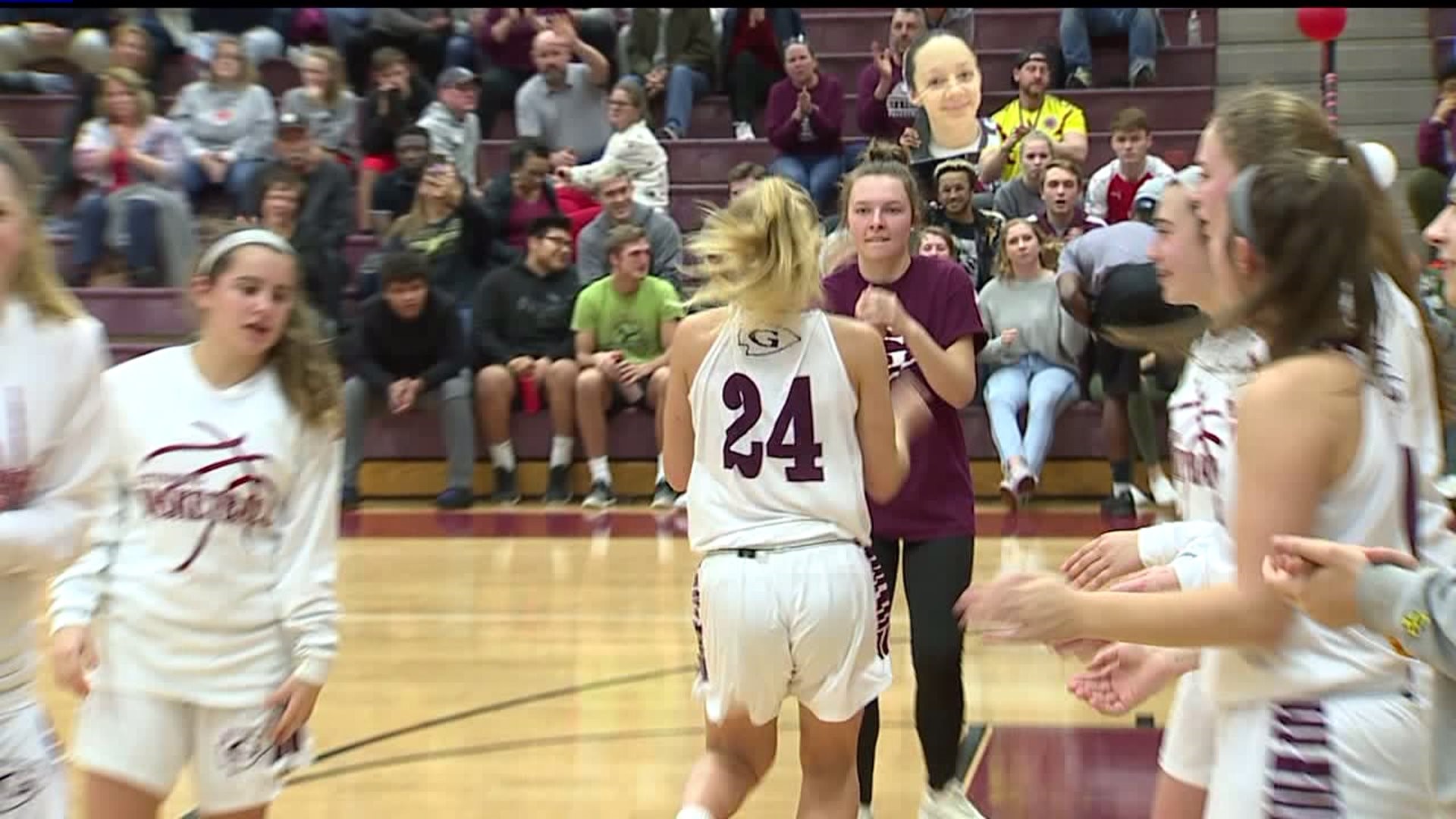She hails from a land with no real mountains where the highest point is only 318 meters (1,043 feet) above sea level. She was just 15 years old when the Pyeongchang Winter Olympics began.
But Estonia’s Kelly Sildaru is already an extreme sports phenomenon, inspiring rivals that have been competing for longer than she’s been alive.
On the slopes of Aspen in 2016, Sildaru became the youngest Winter X Games champion in history, taking gold in the skiing slopestyle competition aged 13.
It was no fluke. A year later she became the youngest to retain her title, also finishing on the podium in the big air event.
Only a cruciate knee ligament injury sustained in September 2017 prevented the teenager from reaching similarly dizzying heights at the Games in South Korea, where she would have been one of the gold medal favorites.
Sildaru, though, has her feet firmly on the ground.
“I think that I’ve always been a normal kid,” she tells CNN Sport from her school in Tallinn, despite the overwhelming evidence to the contrary.
“Since I won my first X Games, people are watching me when I walk down the street. But I think Estonians are quite shy. They’re not coming up to you and taking pictures.
“I think it’s quite good to be famous in Estonia — much easier than in the US.”
Skiing siblings
As 17-year-old snowboarder Chloe Kim captured hearts around the world at PyeongChang 2018, the world’s best female freestyle skier watched on from home.
In a quirk of fate, Sildaru celebrated her 16th birthday on the day the women’s Olympic slopestyle competition took place.
The Estonian acknowledges it was “pretty weird” having to watch on television as the medals were handed out to women she has grown accustomed to beating, but she is wise enough to know that time is on her side.
“Hopefully, my best years are still to come,” says Sildaru, five months after her surgery as she prepares to return to the slopes.
“I’m so young that I don’t want to go back to snow when I’m not ready and injure myself again. I just want to take my time as much as I need and then go back.”
Fortunately, Sildaru is flanked by two of her closest companions almost everywhere she goes.
Her brother Henry, 11, was already on skis before many children have learned to walk. Their father Tõnis quit his job “four or five years ago” to facilitate their development and coach full time.
“It’s really nice that I can travel with my family members and not some random people or coaches,” laughs Sildaru. “They’re very supportive.”
Unsurprisingly, there’s a healthy sense of competition between the siblings, with Henry blossoming into an exceptional freestyle skier in his own right.
“Oh yeah, we drive each other on all the time,” says Kelly. “Every day skiing, we’re competing to see who can do a trick better. All the time, everywhere.”
As the elder sibling, Kelly might have grown accustomed to setting the standard, but she is modest enough to admit Henry is hot on her heels.
“We were basically at the same level before I injured myself,” says Sildaru. “Now, when I haven’t skied for four to five months, I’ve already seen that Henry is better than me.”
Is he set on dedicating his life to skiing too?
“Yeah, yeah for sure,” she says.
And can they recall a time when they thought of doing anything else?
She pauses for thought. “I don’t think we have had it.”
Their father is quick to stress that it is too early to speak of his young son as an elite athlete, due to the “enormous competition” among men, but he says “the flame burns even brighter in Henry.”
You’d think Kelly would be jealous. You’d be wrong.
“Actually, I think I like this. Because when I go back, I can follow him,” she says.
“Before, it was the other way around. It was a case of, ‘I’m going to do something and Henry is going to try and do it better than me.’ But now he’s going to do it and I’m going to follow.
“Now it’s like he’s my older brother. He’s always been my motivation, but now even more so I guess.”
It’s a heart-warming sentiment and Tõnis, who describes himself as “part trainer, teacher, cook, father and cameraman,” has been there to guide them every step of the way.
Kelly acknowledges that the siblings’ ambition to push the boundaries of their sport might “sometimes” give their father cause for concern.
But equally she knows that, however gifted they might be, Tõnis is there protect them, as well as push.
“If he thinks we can’t do some tricks or jumps, usually he doesn’t let us,” Sildaru explains.
Asked if she would ever defy him and attempt a dangerous trick once she’s turned 18, Sildaru laughs: “He’s still my coach — I’m listening to him.”
New horizons
She is already the first female skier to land a switch 1260 degree mute (backwards take off, grabbing the skis in the air) 1440 degree spin in competition — both coming in the big air event at the 2017 X Games in Norway.
The latter is the trick Sildaru is most proud of, but she’s already formulating plans to execute it even better.
She’s also eager to land a triple backflip in competition — something few women have ever attempted.
“I’ve never done a triple so I can’t say for sure what it will be like, but I think it’s basically the same thing as when you go from a single to a double flip,” says Sildaru.
“Once you can do doubles with your eyes closed and you don’t stress about them anymore, then it’s just one more flip and that’s it. When you know how to do doubles, triples shouldn’t be very hard.”
To hear a teenager speak so stolidly about pushing the boundaries of her sport is testament to the scale of her ambitions.
It’s a mentality entwined in the very DNA of extreme sports.
“All the time, whenever someone does something great or new, we’re happy that we’re pushing the sport further,” she says.
Perhaps the only thing holding Sildaru back at the moment is her size. When she became the youngest ever winner of two X Games gold medals in Aspen last year, she stood just 5 feet 6 inches tall and weighed 88 pounds — the lightest and shortest in the entire competition.
An adult had to push the teenager towards the kicker during her 2017 X Games big air medal-winning run in Norway.
“For me it’s always been hard, getting enough speed,” she admits, having been unable to compete in last year’s slopestyle competition for that reason.
“It’s always been quite bad, and I think at some point it got worse, because the jumps got bigger but I didn’t grow. But now it’s getting better I think. I’m gaining weight, or least I’m trying to.”
By the time the next Winter Olympics in Beijing comes around, Sildaru will be turning 20 and eager to make up for lost time.
If all goes well, she could go for gold in numerous freestyle skiing events.
“Oh yeah, I really want to,” she exclaims. “A few years ago, if I went somewhere for a slopestyle competition and nearby there was a halfpipe competition in the same resort, I’d do both. But I wouldn’t travel somewhere only for halfpipe. Now though, when I come back from injury, I’m definitely going to do that.”
At the most recent FIS Freestyle Junior World Ski Championships, Sildaru won both the slopestyle and halfpipe events by huge margins. Both are Olympic disciplines
Should women’s skiing big air be added to the Olympic calendar by 2022 as is touted, Sildaru has a shot at winning three gold medals in a single Winter Games.
Estonia, the 158th most populous country in the world, has only won four in its entire history — all in cross country skiing.
Stratospheric
With all that in mind, it’s hardly surprising that Sildaru is already by far the most popular athlete in Estonia.
The family’s life on the road is documented by a series of video logs which regularly attract hundreds of thousands of views on YouTube.
Her Facebook page has more than 60,000 followers, more than double those of leading Estonian tennis player Kaia Kanepi and Liverpool footballer Ragnar Klavan.
Does she see herself outgrowing her home country as the spotlight increases? Far from it.
While many Winter Olympians relocate in search of the optimum conditions for training, Sildaru is more than happy for now on her 100-meter hill.
“Listen, I don’t think there is a need,” she says. “And also it’s not even something I want, because all of my friends live in Estonia.
“I really love this country.”
Sildaru is now old enough to compete in FIS World Cup events and she topped the podium on her debut in August 2017.
Everything points to a golden Winter Games four years from now.
Is Kim, who has shot to mainstream fame since landing back-to-back 1080s in Pyeongchang, someone she’d like to emulate in Tokyo?
“Yeah, I want to,” Sildaru says matter-of-factly. “I think everyone would like that.”



